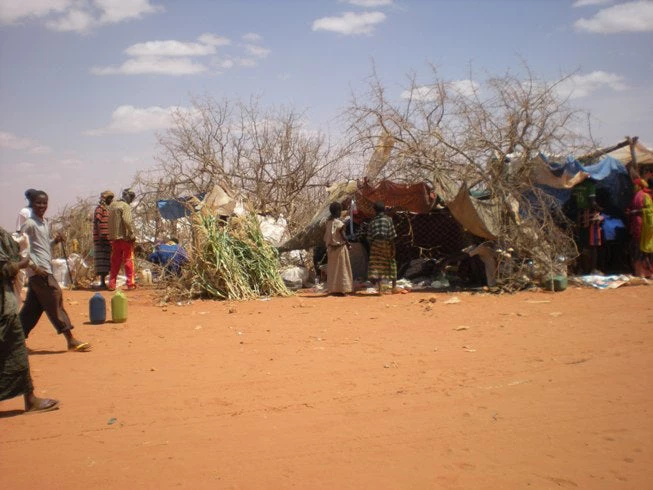I am standing in a camp near Dollo Ado, in southern Ethiopia near the border with Somalia. The camp is an open site on hard rocky land: the only vegetation is grey, thorny scrub. An endless wind is swirling around me, picking up the light soil under foot and coating everyone and everything with a thin film of orange. Dust devils spin lazily in the relentless hot sun, making it hard to see the plastic sheeting that is the only covering for the ‘huts’ in which 10,000 people are living. Welcome to Haloweyn, the newest refugee camp for the drought-triggered exodus from Somalia. Today is Eid-ul-Fitr, but nobody is celebrating here.

Back in Dollo Ado itself, we learn of a grimmer reality. The people we were able to meet are only one side of the story. UNHCR staff—who mobilized at 72 hours notice from their ‘normal’ jobs—have been working actively with the Ethiopian Government’s refugee agency since June to build up the camp infrastructure and provide a system to properly handle the influx. And their implementing partners, mainly international NGOs, have been mobilizing also. However, while much has happened, some crucial support services, particularly those that require outreach to individual families are only now being put in place. The results show up in dry statistics: death rates among children under five are four times what global standards suggest they should be; access to water is well below the global standard to which they aspire; rates of acute malnutrition remain much too high. There has already been a major outbreak of measles in the Kobe camp (which we also visited) and UNHCR are worried about what the next epidemic might be.
The international humanitarian community is a close knit one, to which the Bank is a newcomer. A U.S. Government official in Dollo Ado commented that, “On all the humanitarian missions I’ve done, I’ve never before met someone from the World Bank. Are you becoming a humanitarian agency?” Despite her puzzlement, everyone is happy to hear that IDA is hoping to provide $30 million from its Crisis Response Window to support the delivery of health and nutrition services both here and in the Dadaab camps in Kenya. In this situation, a little money can go a long way in providing the services to help vulnerable people survive in the short-term and embark on the process of recovery. And it provides a way for the Bank to initiate a discussion on the long-term prospects for these refugees. How many Eid-ul-Fitrs will they spend in these camps? Experience from elsewhere suggests, on average, seventeen. Our experience working with the pastoral communities of East Africa can help the refugees, government, and development partners make sense of this development challenge.
As we are getting ready to leave Dollo Ado for our flight back to Addis Ababa, I hear that, in one of the camps we did not have time to visit, the residents found the energy to dress up in their best clothes and decorated the camp to celebrate Eid. An optimistic and cheering note to reflect on as we return to Addis; working our way between the thunder clouds that bring plenty of rain to the Ethiopian Highlands, but not yet to the Somali Region.
Eid Mubarak!
Eid-ul-Fitr means the “feast of breaking the fast” and is marked by a prayer, and days of feasting, celebration, and the giving of alms to the poor. Somalis are Muslim, and so will have been on a religious fast for a month. But as drought-affected refugees they have probably been fasting for many months. When will the drought be over and they be able properly to break their fast?


Join the Conversation